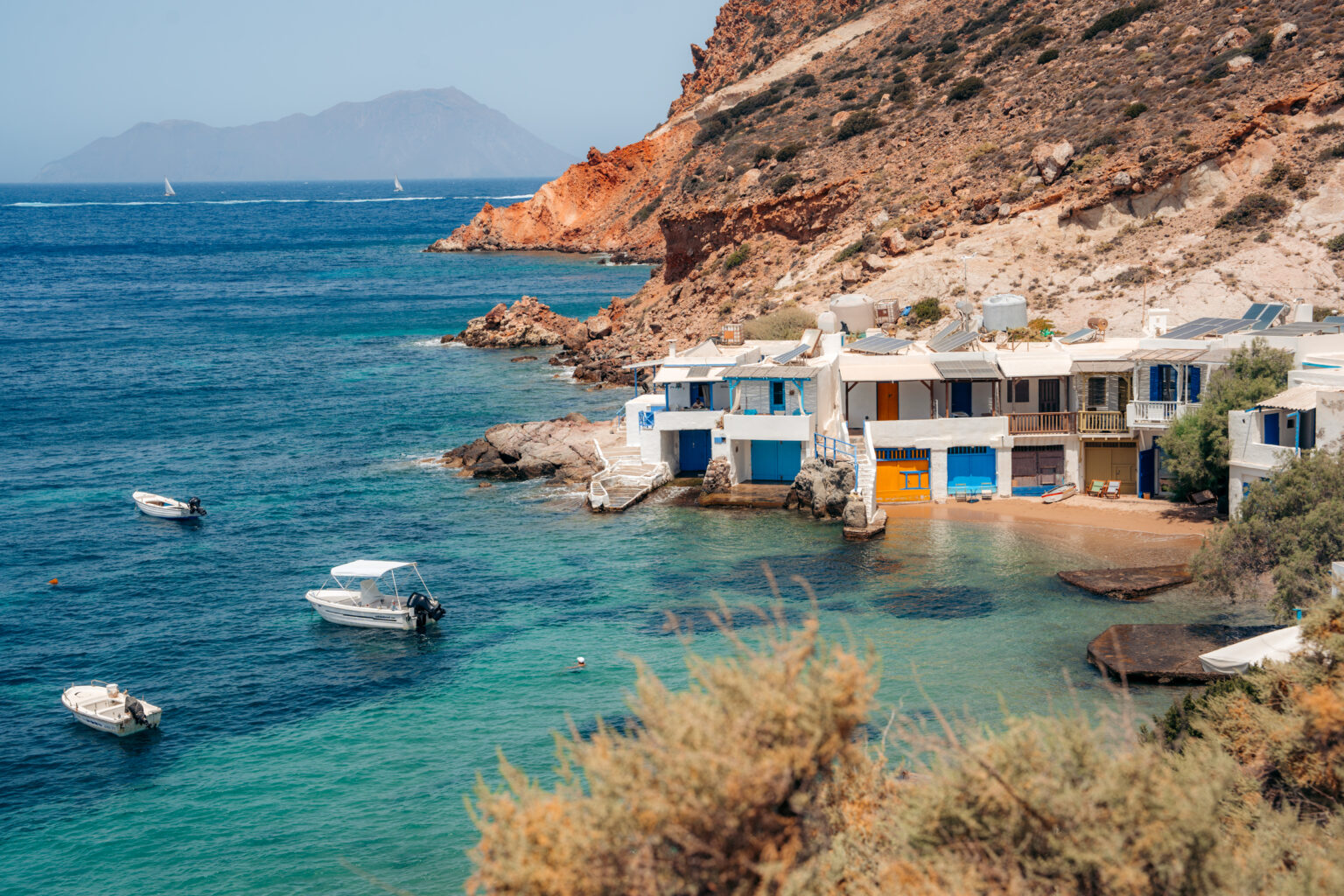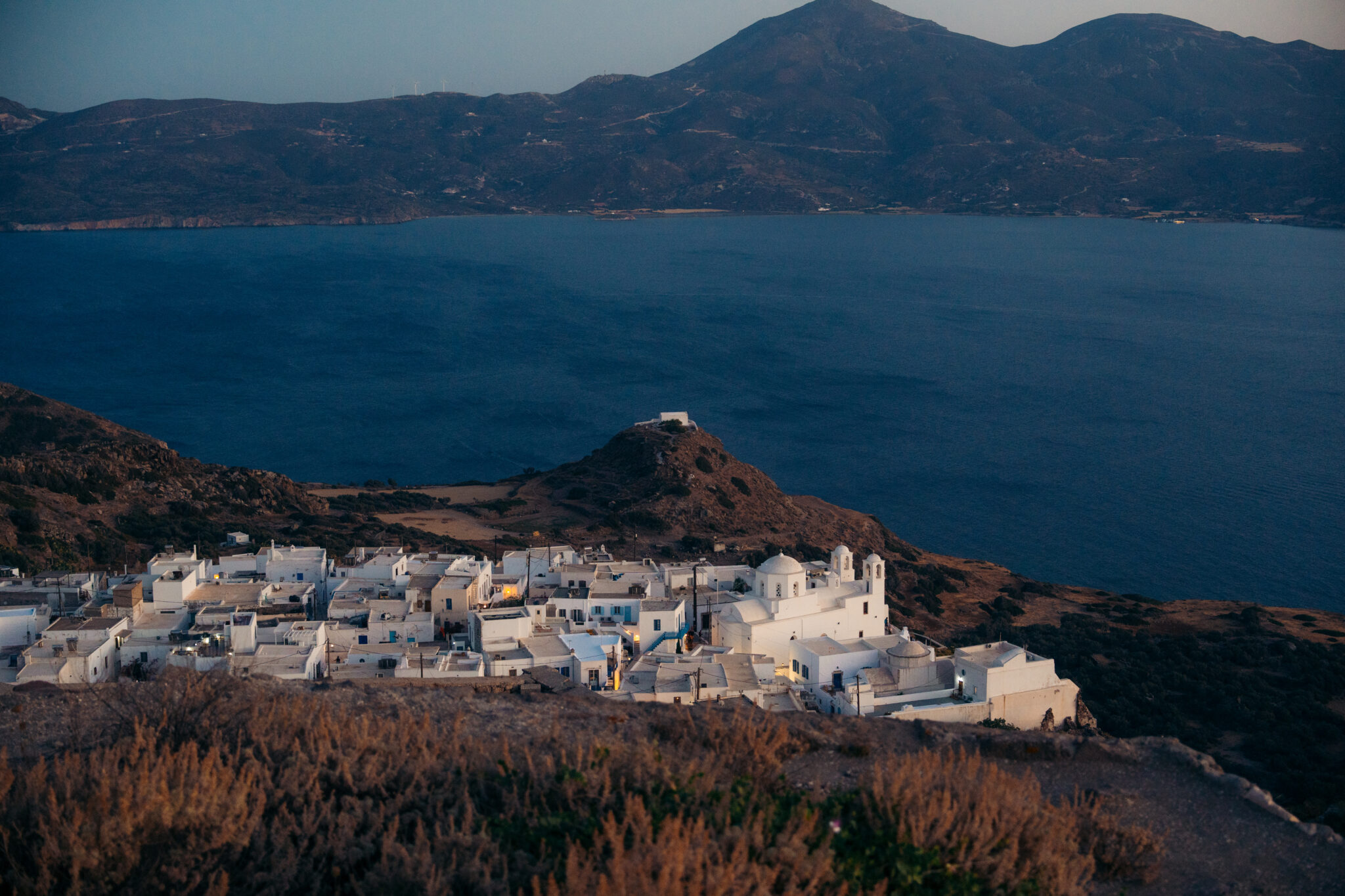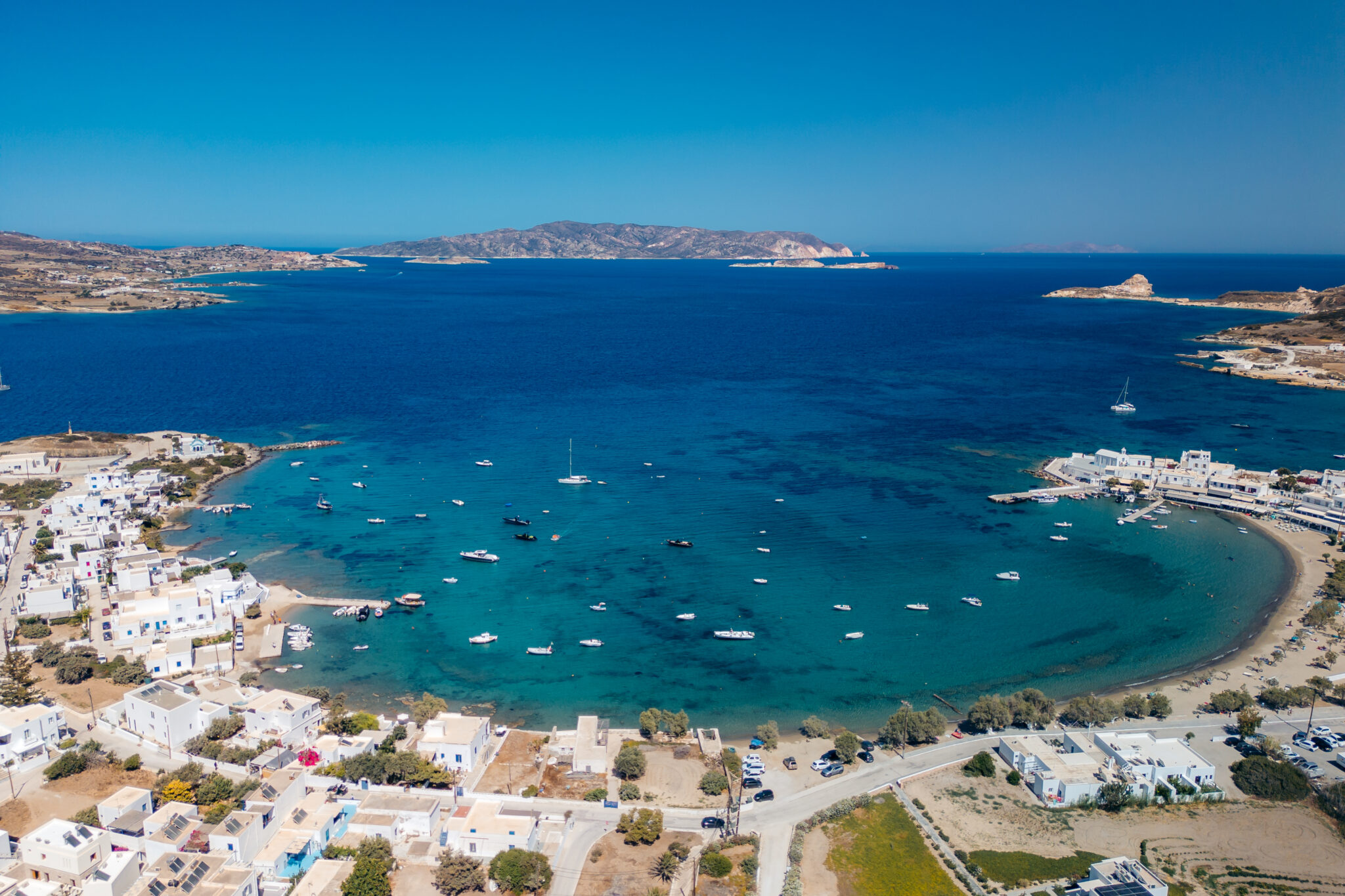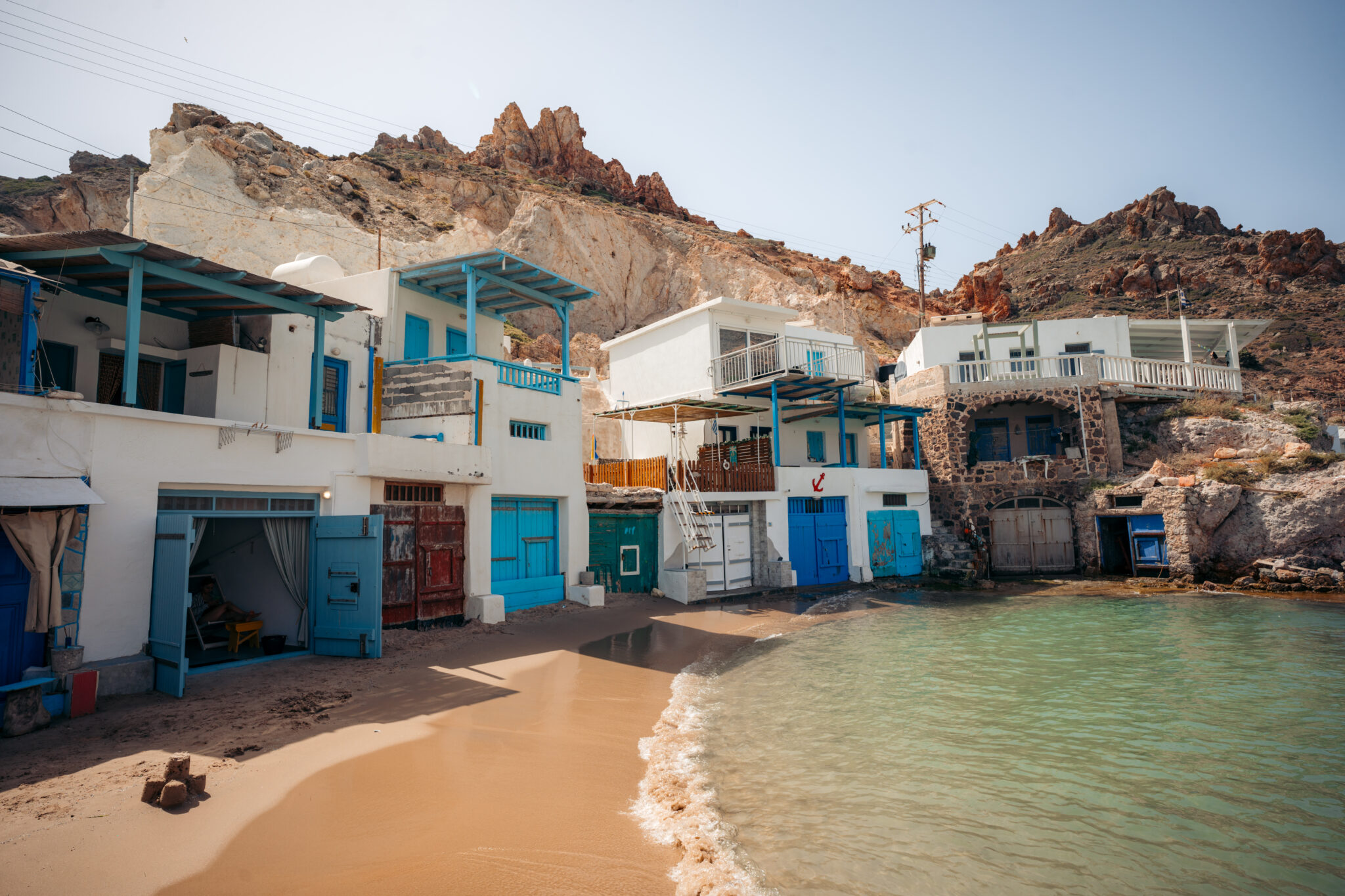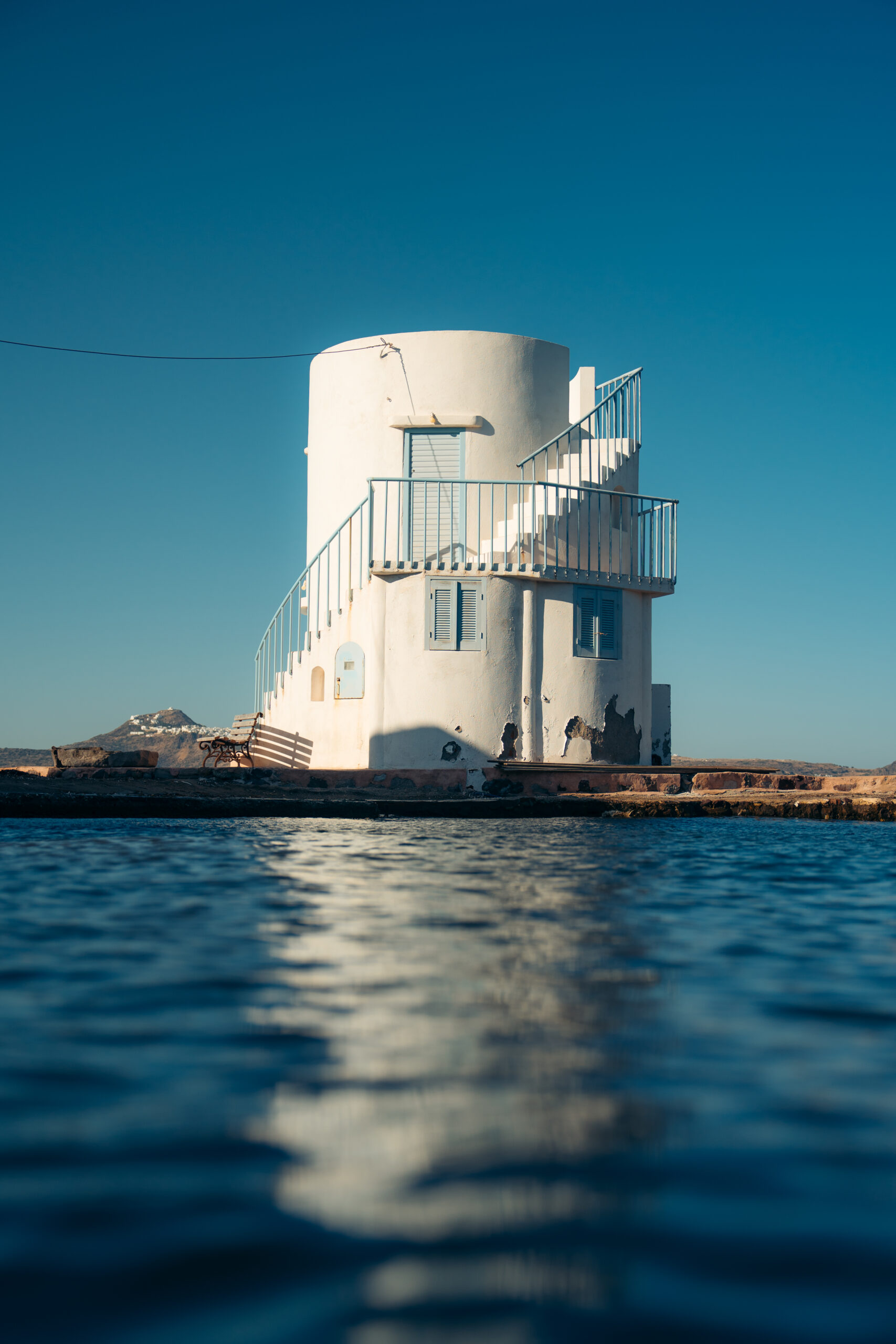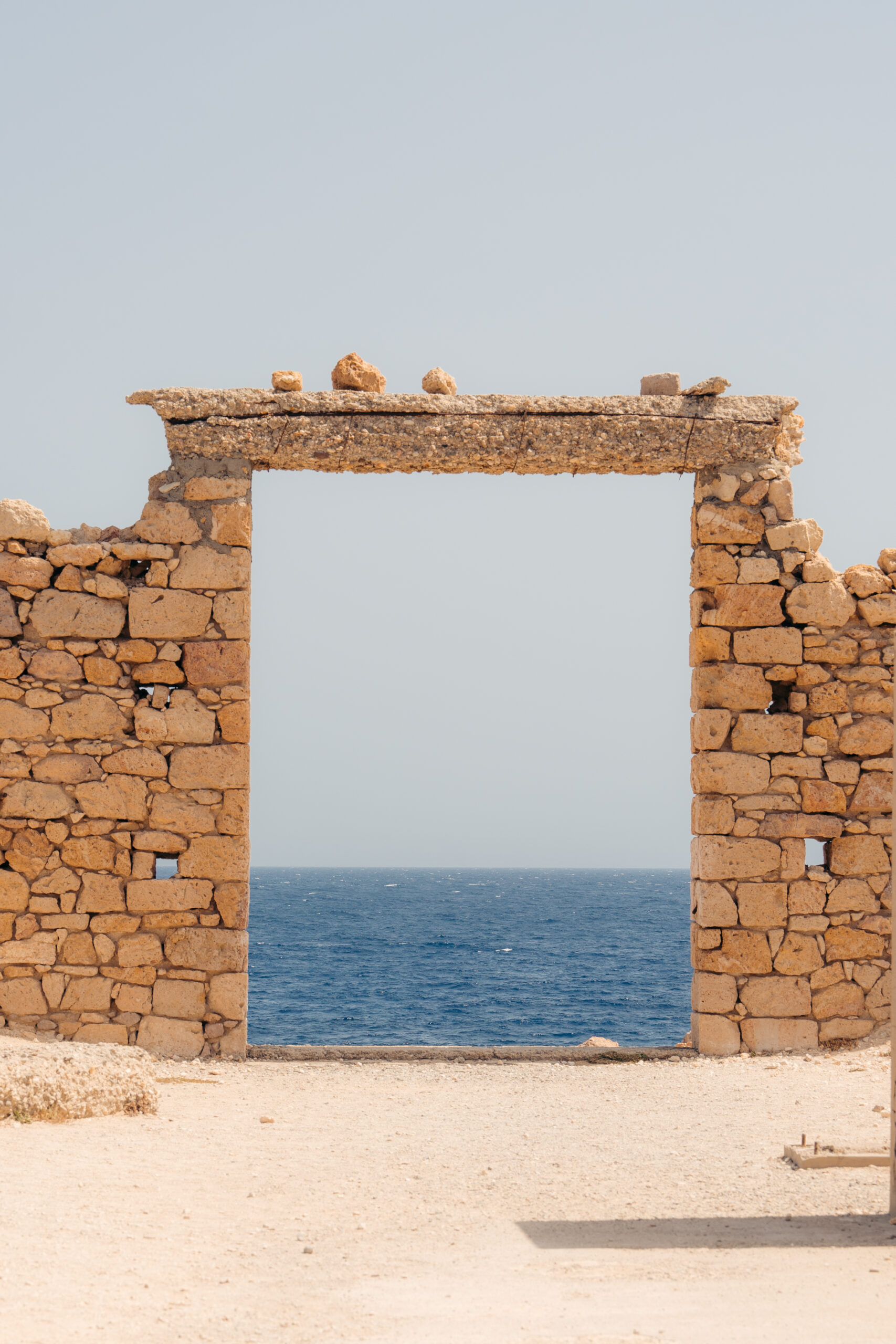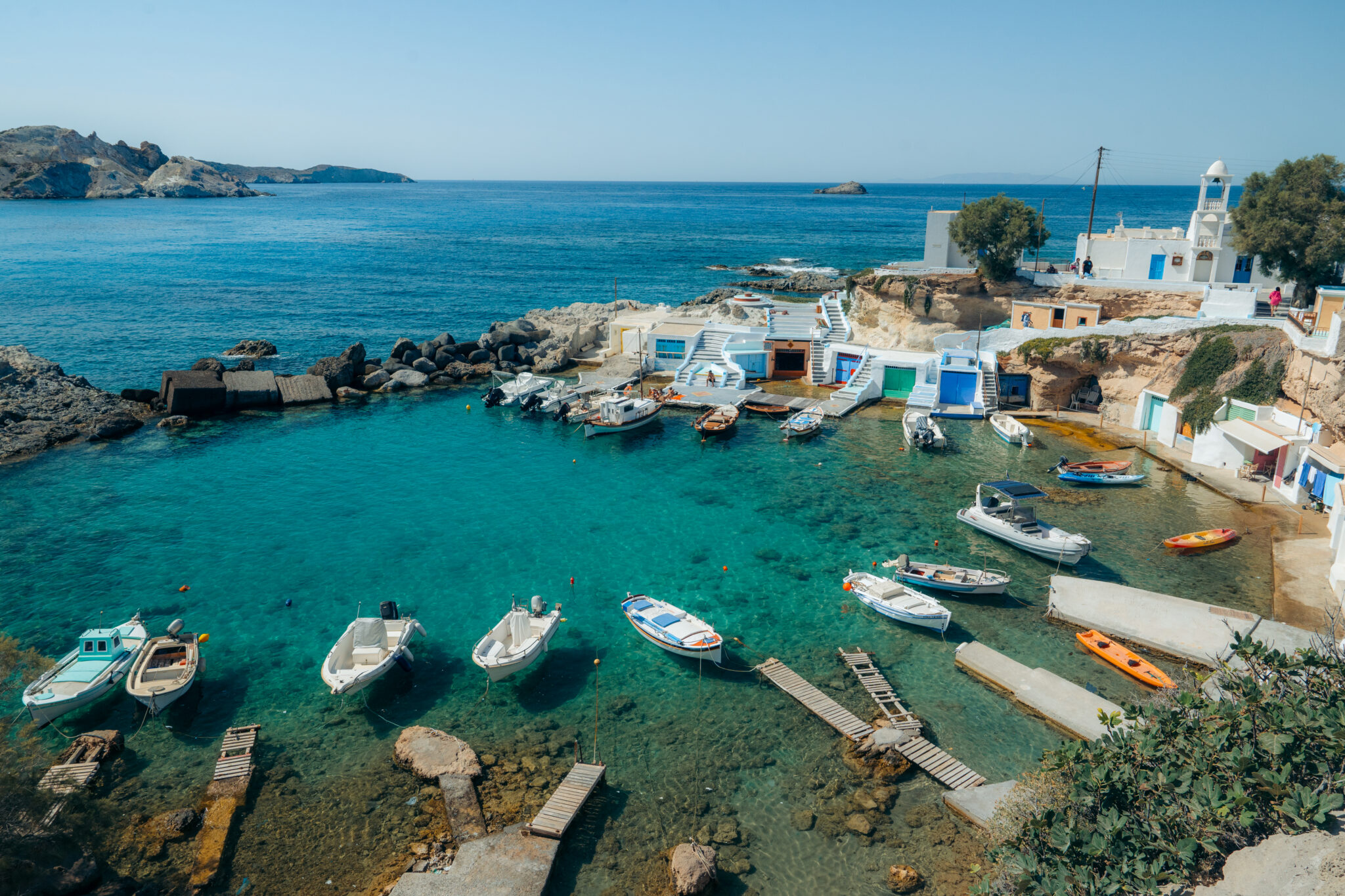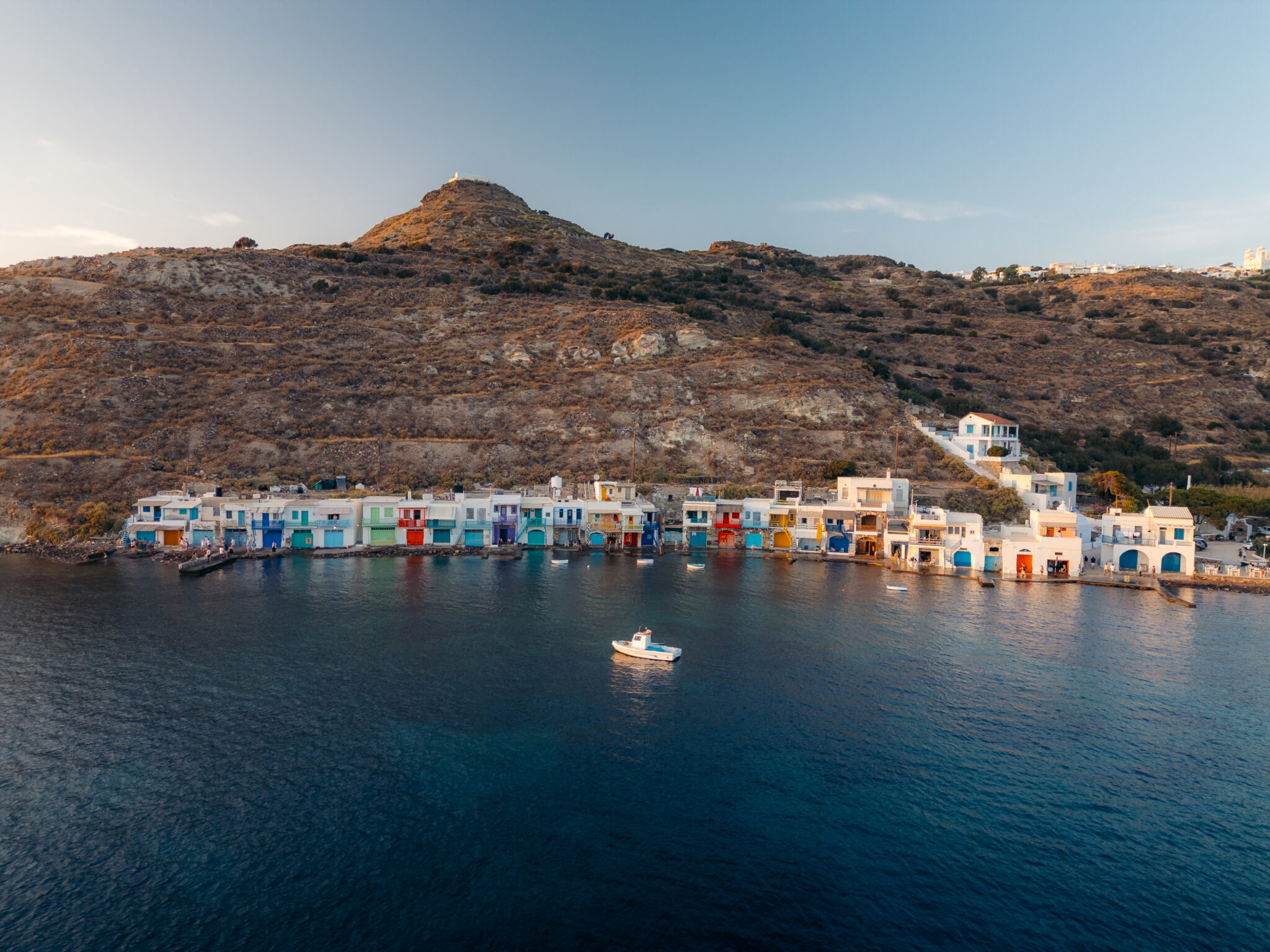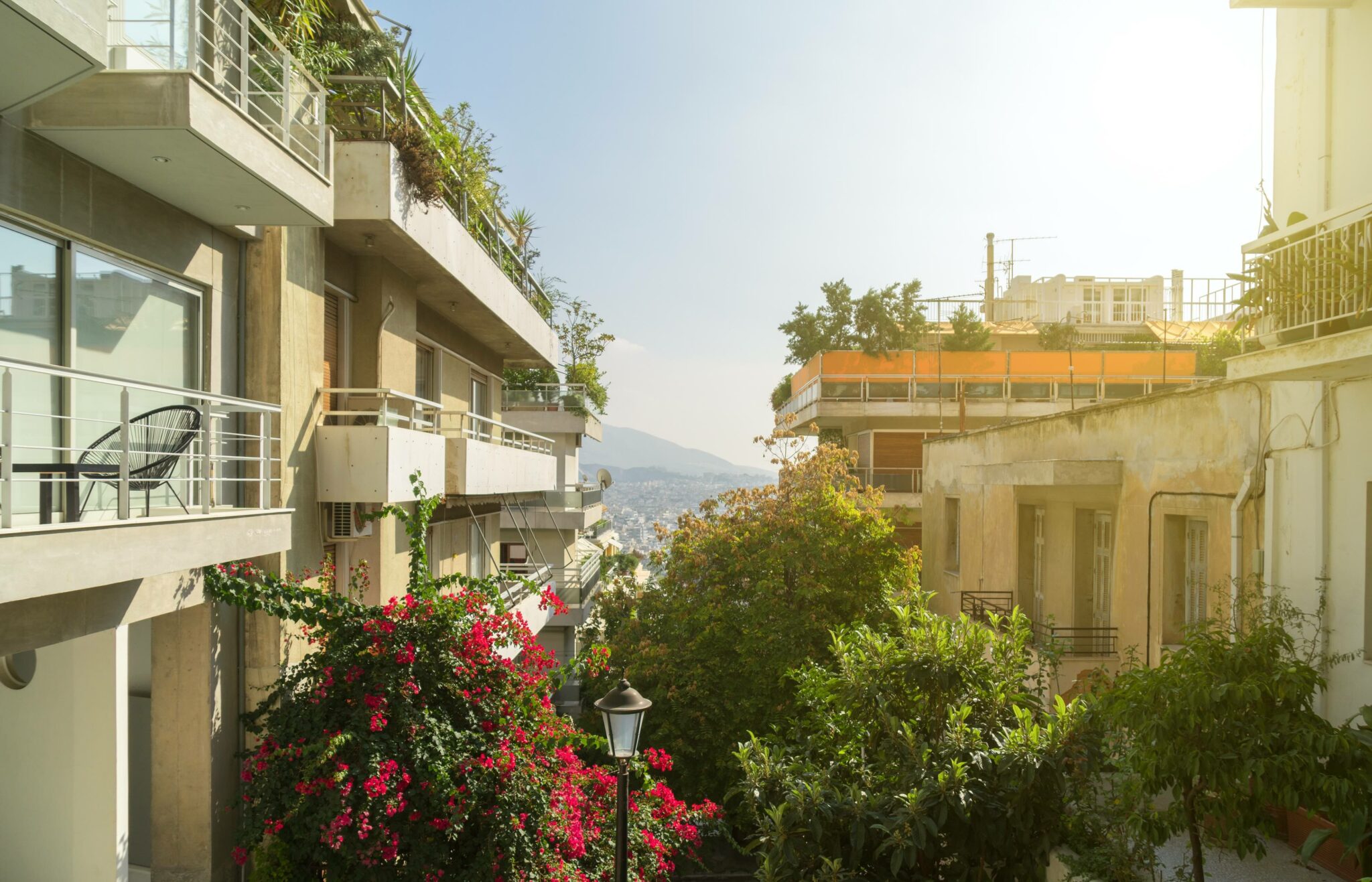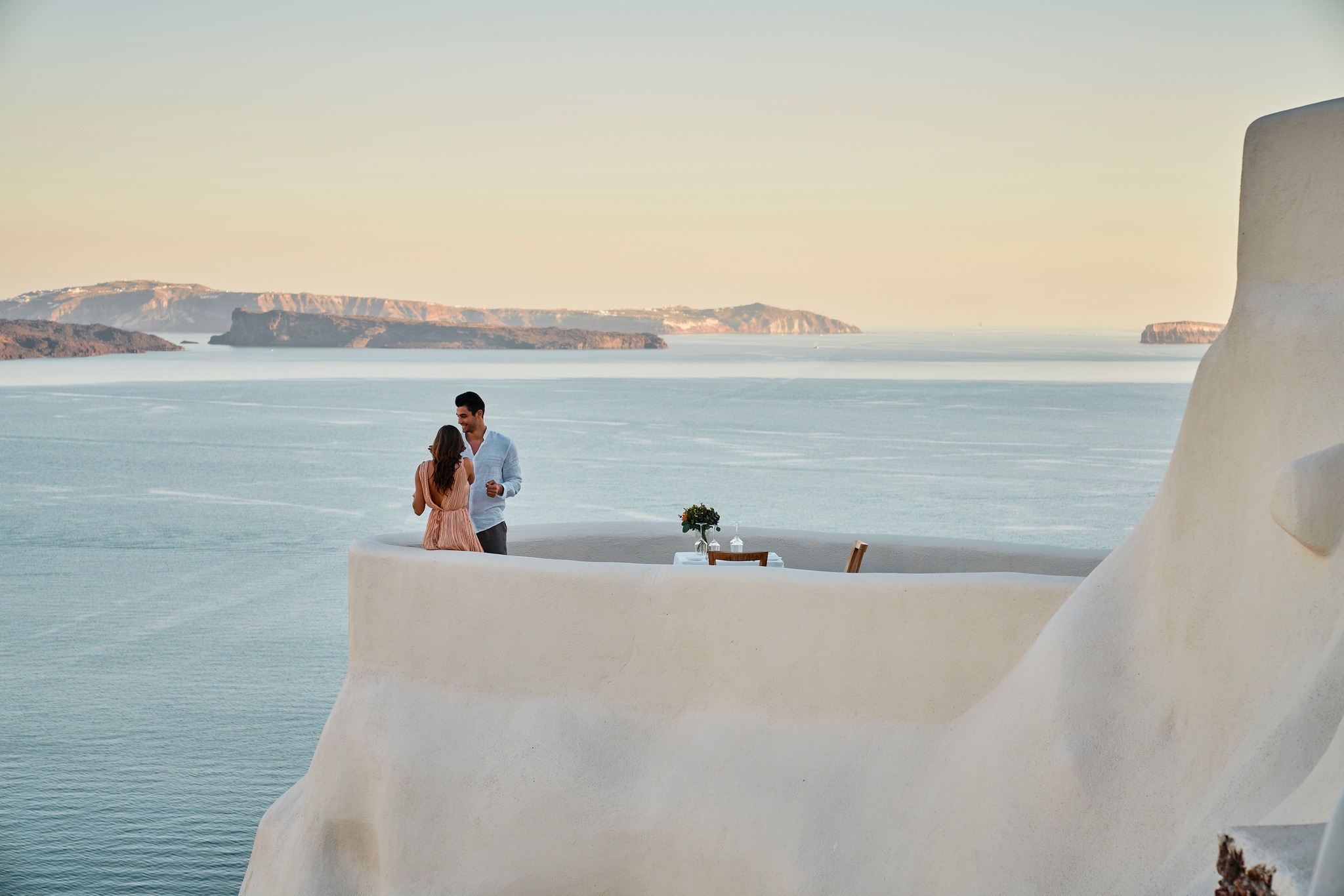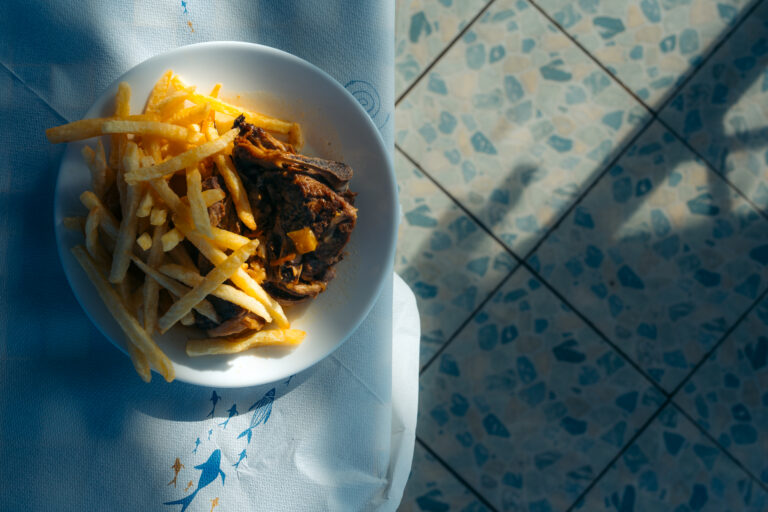Architecture, gastronomy, culture and history are colorfully alive in Milos’ towns. The classic Cycladic style prevails in Plaka, Tripiti, and Pollonia, while the bustling port of Adamas is the centerpiece of life on the island. Meanwhile seafront Klima, with its multi-colored “syrmata,” fishermen’s storage spaces, continue to enchant visitors with its quaint beauty.
Plaka
The old capital, Zephyria, remains the main town (Chora) of Milos. Plaka is built beneath the hill of the castle, which lies in ruins and is believed to have been constructed in the 13th century by the Venetians. The inhabitants abandoned it in the 14th century to live in Zephyria for unknown reasons and returned after the 19th century.
The prime reason to hike up to the castle ruins is to delight in a stunning sunset. Along the way, you will come across two beautiful churches: Panagia Thalassitra and Mesa Panagia (also known as Panagia Sikiniotissa). From their courtyards, you can take in exceptional views of the sea and Plaka. Thalassitra, dedicated to the Presentation of Christ, is mentioned in documents dating back to 1738 and features a magnificent stone bell tower and folk stone carvings.
Another notable church is Panagia Korfiatissa in Marmara, within Plaka, believed to have been built in the early 19th century. Its courtyard is an ideal spot to enjoy a panoramic views of the sea. Cars are prohibited In Plaka’s Cycladic alleyways, so you can enjoy a safe and leisurely stroll that’s especially fun for kids. There are also several shops, cafes, bars, and restaurants to explore.
On the main road leading to the village, you will see a neoclassical building from 1892, which once housed the town hall. Today, it hosts the Archaeological Museum of Milos, where the standout exhibit is a plaster replica of the famous Venus de Milo. The original is displayed at the Louvre and is believed to have been discovered near the Roman Theater in 1820. It is sculpted from Parian marble and dates to 150-120 BC. The museum’s exhibits come from the ancient city of Klima and Phylakopi, and date from the 4th millennium BC to the early Christian era.
A visit to the neighboring settlement of Tripiti, connected to Plaka, is also worthwhile. It offers wonderful views and features cafes and restaurants. Here, you can see the church of St. Nicholas and the restored windmills.
Pollonia
The quiet coastal settlement in the northeastern part of the island was once a fishing village. Over the years it has become a popular tourist destination with noteworthy modern boutique hotels and suites, rental homes, cafes, restaurants, beach bars, and fish tavernas. The sandy beach within the bay, with its calm waters and tamarisk trees, is ideal for swimming and walking. At the other end lies the peninsula with the Pelekouda lighthouse and the church of St. Nicholas.
From Pollonia you can easily reach the nearby near-legendary beach of Sarakiniko and that of Papafragas, as well as the archaeological site of Phylakopi. Tourist boats depart for Kimolos, passing by the islet of Polyegos, with its crystal-clear green-turquoise waters.
Adamas
Constant activity and vibrancy define Adamas, the port of Milos where all public services, shops, and the island’s marina are located. The settlement was built by refugees from Sfakia, and is one of the four largest ports in Greece, with a strategic location that contributed to its significant development. There are many options for dining, coffee, and nightlife, and numerous hotels and rental apartments operate here. Be sure to visit the Ecclesiastical Museum of Adamas, housed in the church of the Holy Trinity, or Panagia Theofani.
You can admire remarkable architecture and great historical elements, with preserved features from reconstructions and repairs throughout various historical periods, from Byzantine and Frankish times to the Ottoman Era and the 19th century. The museum’s exhibits are significant, with some originating from the abandoned churches of Zephyria. Since 1998, Adamas has also been home to the Mining Museum, established by “S&B Industrial Minerals,” the largest mining company on Milos. Exhibits include mining tools, a small mining cart, and an extensive collection of minerals from Milos.
Mandrakia, Fyropotamos, Fourkovouni, and Embourios
Carved into the volcanic rocks of the island, the “syrmata”. These were spaces where locals stored their wooden boats during the winter to protect them from the elements. The name “syrmata” comes from the thick ropes used to drag the boats into these cave-like structures, the front of which were built with masonry. Some even had an upper floor where the owners would stay while they worked on repairs, maintenance, and painting.
“Syrmata” with colorful doors and windows make up the tiny seaside fishing villages of Milos, such as Mandrakia, Fyropotamos, and Fourkovouni, with their stunning azure waters. The scene they create, especially when viewed from the sea, is impressive. You can reach Embourios by boat or by car, passing by the lagoon at Rivari. The village has very few houses and faces the opposite side of the Adamas bay. It looks as though it has been left behind in earlier decades.
Klima
In Klima, the “syrmata” delight visitors and inspire countless photographs. Along with Kleftiko and Sarakiniko, Klima features prominently in the images that have put Milos on the world map. Some even call it “Little Venice,” and international media have ranked it among the most beautiful villages in Greece. The two-story houses with their vibrant colors are a sight to behold, and their large doors remain open so that anyone can peek inside. Standing side by side, right at the water’s edge, where during high tide the sea reaches their doorsteps, the “syrmata” are now used as holiday homes by locals or rented out to tourists who want to experience an authentic aspect of the island life.
As you wander through, you’ll feel like part of this small community, where people live outdoors year-round, cleaning vegetables and fish, playing backgammon, and sipping ouzo with friends. And they await the sunset, when the heat subsides and the sun’s rays turn orange, gently caressing Klima and the boats that sway slowly in the water.



